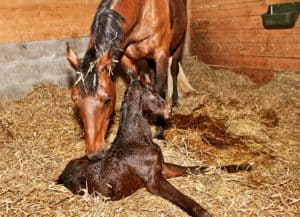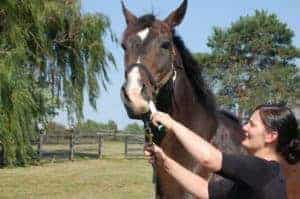Mares and Foals Have Field of Vision Preferences
- Topics: Breeding and Reproduction, Foal Care, Mare Care

Horses have their side preferences—called lateralization—much like humans do. We’re typically left-handed or right-handed; they’re “left-legged” or “right-legged.”
But when it comes to foals and their mothers, the left eye bests the right almost every time. Russian researchers have learned that foals and dams prefer looking at each other with their left eyes and keeping each other in their left field of vision in most situations. The phenomenon is strong in both domestic and feral horses and even stronger—as their study results have shown—in the Przewalski’s horse. In other words, it’s a mother-infant lateralization that has stood the test of time, evolution, and domestication.
“The fact that visual lateralization exists in wild populations of horses indicates that this is their biologically relevant feature not associated with domestication,” said Karina Karenina, PhD, of the Saint Petersburg State University’s Faculty of Biology Department of Vertebrate Zoology. “Taking visual preferences into account in human-horse interactions may be beneficial for both humans and horses
Create a free account with TheHorse.com to view this content.
TheHorse.com is home to thousands of free articles about horse health care. In order to access some of our exclusive free content, you must be signed into TheHorse.com.
Start your free account today!
Already have an account?
and continue reading.

Written by:
Christa Lesté-Lasserre, MA
Related Articles
Stay on top of the most recent Horse Health news with












